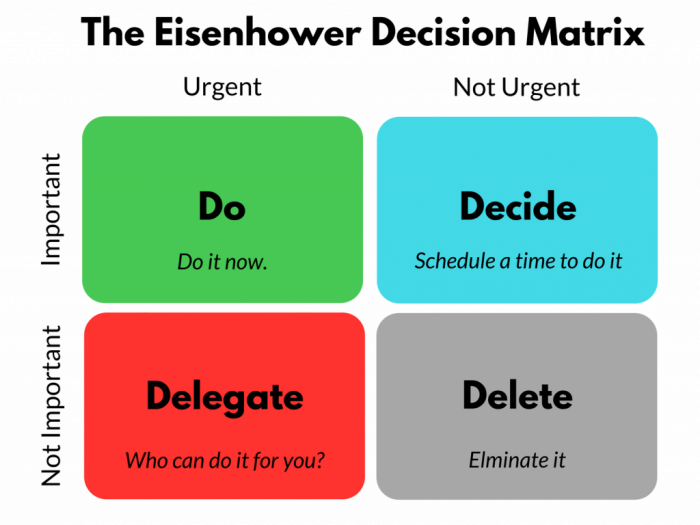
18 Feb TSLH #007: How To Turn A 24-Hour Day Into A 48-Hour Day?
Read time: 8 minutes (there’s so much to say!)
When I coach clients or people on my team, one of the most frequent resistances I experience from them is the thought that they don’t have time.
No time to work on the coaching assignment, no time to train and learn, no time to think about their goals, no time to rest because that project or presentation must be done, etc., etc., etc.
Recently, a friend of mine joked with me that I should teach him how to turn a 24-hour day into a 48-hour day.
This is exactly what I will show you today.
Will I really turn your 24-hour day into a 48-hour one? Maybe not!
What I will do though is show you how you can take control of your time and do more things every day. This will definitely feel like having twice the time you have today!
First things first, and because I like a challenge – and I also love sciences – I gave a thought at the idea of turning a 24-hour day into a 48-hour day.
👇 I did find a way to do that 👇
In fact, using Einstein’s relativity theory – which for the record has now been proven multiple times – you can slow down time enough that, to an observer on earth, your day would seem to last 48 hours when a day on earth would last the standard 24 hours.
There are 2 ways to achieve this:
- You travel in space at 87% of the light of speed. At this speed, for you, nothing will change, really – alright, you might feel nauseous at this speed! – your day will still be a 24-hour day. However, for someone observing you from earth, they would see that the time has slowed down for you to the point where when 24 hours have passed on earth, 48 hours have actually passed for you.
- You travel to a very massive celestial object, like a black hole for instance. This is sure to slow down time for you enough relative to someone who stayed on earth.
OK, none of these 2 solutions are really doable, it was more for the fun.
But if you’re wondering, it has been proven (even calculated) that if someone lived on Mount Everest (29,000 feet above see level) for 30 years, they would age faster than someone who stayed at sea level for the same 30 years. Well, the difference in aging would be 0.91 millisecond!!!
Fun apart, how can you make most of your day, control your time so that it seems your days has most hours than it does have?
I am giving you 5 tools you can use here, in your life or at work to be the master of your time and achieve more with the same number of hours in a day. What’s more, I am showing you HOW to use these 5 tools to create a strong process to own your time and do more. I therefore encourage you to use these tools in the order they are presented below.
The Eisenhower Matrix. This is the foundation for getting control of your time. If you skip that step, nothing really significant or transformational will happen.
The Eisenhower Matrix (from General and US President Dwight D. Eisenhower) is a process to sort out activities based on their importance and their urgency to you.
This is what it looks like:

And this is what you should do with it:
- For a long enough period of time that is representative of your average day(s) at work or in your life (I recommend a month), write down everything you do during a day. Just make a list, without afterthought. List the activity, and the time in minutes it took you to complete it.
- Once you have your data for a full month, look at your list and create 2 columns. One column is titled “Important/Non-Important” and the other column is titled “Urgent/Non-Urgent”.
- For each item on your list, write down whether this activity was important or non-important to you and whether this activity was urgent or non-urgent to you.
- Calculate the time spent in each of the quadrants.
- What are you discovering?
Now, if you’re serious about controlling your time, you will need to spend about 70% of your time in the quadrant “Important & Non-Urgent” (the blue quadrant in the picture above). Look at your quadrant from the exercise you did. Where do you stand here? Close to 70%? Much lower? What does it tell you about how much of your time is focused on the things that matter?
Before you take action, do one last thing: Identify important & non-urgent activities that matter to you and that are not yet listed in the blue quadrant. Typically, these will be activities where your famous quote “I don’t have time” will have prevented you from doing these activities.
These could be activities such as having a morning routine, bring your kids to school, have a meal with your partner, take time to read or learn, attend a conference or training, meet with friends, prepare an important presentation at work, organize travel with your family, etc. You’ll see that finding those will be fairly easy.
Take control of your calendar. Now that you have a much better idea of the things that are important and non-urgent for you, things that matter, and you have a fairly comprehensive overview of what you do in any given month, I will have you take control of your calendar.
So, take a breath, start fresh with your calendar page for the next month and let’s go!
This is a 4-step process:
- Look at the quadrant “Important and Non-Urgent”. These are the activities that matter to you and that you should plan for. Start putting them in your calendar. Don’t be shy. If taking your kids to school is important to you, block time in your calendar for this activity. If you want to put time with no calls nor meetings so you can prepare presentations or work on project, block time in your calendar and make it clear that you won’t accept calls or meetings in that time slot.
- Now that you feel better about having done this, you should have covered about 70% of your calendar. If that is not the case, think twice. Once you start putting other activities in (regular meetings, other stuff at work or in your life), it will be too late to accommodate for important and non-urgent activities.
- Now add other activities from the other quadrants, starting with the “Important and Urgent”. Note that some of these important and urgent activities may not be known to you at this point. You will hit a wall at some point where you have more things to put in your calendar than you have time available. This is actually a good spot to be in. This means you are now going to focus on the non-important tasks (non-important to you).
- You should delegate anything that is in the quadrant “Non-Important and Urgent”, because these activities won’t raise your importance level. These could be requests for help, emails that are flagged urgent, etc. You should also free time by discarding most if not all of the activities in the quadrant “Non-Important and Non-Urgent”. It’s OK to have a few activities in this quadrant (if you have time or have a break) but they should not be distractors from the rest.
Use a ToDo list. Now that your calendar is in place, you need a few tools and techniques to get through your days. A ToDo list is a first step. You should first maintain a list of ToDos that can be as long as you need (I tend to write down everything I need to do because I easily forget otherwise).
The trick though is that each day, you should identify only the one or two items from your ToDo list that you can complete and that will make your day a fulfilling one. You could decide to work on a task during one of the time slots you blocked with no calls and no meetings, so that it keeps you uninterrupted.
Once your tasks are completed, get down your list and decide which other tasks you want to complete the next day.
The Pomodoro technique. Knowing which task to tackle is good, and at the same time, if you don’t have a solid process to work on the task, chances are you will overextend yourself in terms of energy, get tired, bored, and may give up. This is where the Pomodoro technique comes in.
Once you have decided on what to work, start working on it for 25 minutes – this is a Pomodoro – and you can put a timer to stop after that time. Then take a short 5 to 10-minute break. Then start again working on the activity for another 25 minutes and do another break. And repeat the process a third time and fourth time (if needed of course). After doing 4 Pomodoros, take a longer 30-minute break. And repeat the whole process until the activity is completed.
Saying “No”. The last technique is really about stepping up courageously to other peoples’ requests and say no in a polite and resolute way.
Let’s face it, everybody, be it in your personal life or at work, has different priorities and someone’s priorities will hardly be priorities for you. Therefore, you must have a process to politely refuse that someone makes their priority yours by simply adding to your plate.
This is a simple process I recommend you use to be able to say “no” in a polite and resolute way:
Ask yourself: “Is this request aligned with my goals and those of my team?”
❌ No: Then, decline the request by using a sentence like “No, I am sorry.” or “I can’t work on this, but here is another option you should consider.”
✅ Yes: Then, use the Eisenhower Matrix to categorize the ask. Most likely, it will belong to either the quadrant “Important & Urgent” or “Non-Important & Urgent”.
Now that you have categorized the request, let’s see what your options are:
- The request is important and urgent: It probably needs some attention from you fairly quickly. It does not mean though that you should sacrifice any of your important and non-urgent tasks. Here are 2 sentences you can use to say “no, but…”: “I can work on this, but I can only do it at this time. Does that work for you?” or “I already work on high priority projects and activities. I can work on this one, but you need to tell me which other activity I should de-prioritize.” This last sentence is particularly useful with your manager.
- The request is non-important and urgent: Consider delegating it to someone on your team who could gain visibility by working on it, or who could develop a skill by doing the activity. When you do this though, keep in mind that as the manager of this person, it may now be your turn to help the person de-prioritize another activity to work on that new request.
Remember, it’s definitely possible to take control and ownership of your time. It all starts with self-awareness, and stepping up to take ownership. Let me know how you have been able to use these tools and techniques.
Have fun with this and I’ll see you next Saturday!
TL; DR (Too Long, Did not Read)
5 tools to take ownership of your time
- The Eisenhower Matrix
- Take control of your calendar
- Use a ToDo list
- The Pomodoro technique
- Saying “No”
Whenever you’re ready, there are 3 ways I can help you:
1️⃣ Work 1-1 with me to step up as the authentic leader you aspire to be.
2️⃣ Hire me to help you build a high-performing team.
3️⃣ Start with my affordable digital courses on Mastering Difficult Conversations for Leaders and Goal Setting


